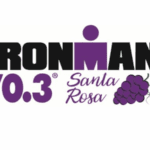As promised, part two of this post will focus more on information and facts regarding gluten and Celiac Disease.
If you missed part 1, I suggest you read it first, as this post will make more sense after reading that.
All the information on this page was taken from Celiac Disease Foundation .
What is Gluten?
Before this whole thing started, I thought gluten was made up. I thought it was another health fad that hipsters participated in just because. Or perhaps it was to lose weight. I also thought gluten was the flavor in food. I loved pizza, cookies, hamburgers, fries (technically GF), etc and there was no way I would even try the GF version of them. Yuck!
According to CDF, “Gluten is a general name for the proteins found in wheat (wheatberries, durum, emmer, semolina, spelt, farina, farro, graham, KAMUT® khorasan wheat and einkorn), rye, barley and triticale – a cross between wheat and rye. Gluten helps foods maintain their shape, acting as a glue that holds food together. Gluten can be found in many types of foods, even ones that would not be expected.”
So, gluten is glue and not flavor. I have actually found that there are some amazing recipes and food products that taste as good or better than their gluten full counter parts. If you haven’t tried Tate’s Bake Shop GF chocolate chip cookies, you are missing out!
What is Celiac Disease?
According to CDF, “Celiac disease is a serious autoimmune disease that occurs in genetically predisposed people where the ingestion of gluten leads to damage in the small intestine. It is estimated to affect 1 in 100 people worldwide. Two and one-half million Americans are undiagnosed and are at risk for long-term health complications.
When people with celiac disease eat gluten (a protein found in wheat, rye and barley), their body mounts an immune response that attacks the small intestine. These attacks lead to damage on the villi, small fingerlike projections that line the small intestine, that promote nutrient absorption. When the villi get damaged, nutrients cannot be absorbed properly into the body.
Celiac disease is hereditary, meaning that it runs in families. People with a first-degree relative with celiac disease (parent, child, sibling) have a 1 in 10 risk of developing celiac disease.
Celiac disease can develop at any age after people start eating foods or medicines that contain gluten. Left untreated, celiac disease can lead to additional serious health problems.”
Sound Scary Yet?
Personally I think this is terrifying! Aside from the fact that now my chances of having Celiac Disease are greater than others, the scariest part is that so many cases get undiagnosed.
As was the case with my Dad, many times the symptoms can appear to be a different disease or issue. There are also many different symptoms since everyone is different. These include unexplained anemia, fatigue, bone or joint pain/arthritis, osteoporosis or osteopenia, liver and biliary tract disorders, depression or anxiety, migraines or seizures, infertility or recurrent miscarriage, mouth ulcers/canker sores, etc. The list goes on.
Symptoms in children are also different, and include abdominal bloating and pain, chronic diarrhea, vomiting, constipation, weight loss, fatigue, irritability and behavioral issues, delayed growth and puberty, ADHD, to name a few.
What Can Be Done?
This is where it gets difficult. Testing isn’t easy and often times is even harder to get done. Many doctors don’t want to test for celiac disease. The test involves blood work and biopsies of the small intestine. Seemingly straight forward, but due to the mystery surrounding the disease, not as simple as it sounds.
There can also be different levels of gluten intolerance, which can be why symptoms can vary so much. My father went 67 years before he was diagnosed and it almost killed him. He is not alone either. Then there are kids who have symptoms from a young age.
The mysteries behind this autoimmune disease provide so many challenges.
The Celiac Disease Foundation is the nation’s leading voluntary health organization for celiac disease. They drive diagnosis, treatment, and a cure for celiac disease through advocacy, education, and research to improve the quality of life for all those affected.
Which makes this organization such an important part to the GF community, and why I am honored to support them in fundraising efforts for the 2020 NYC Marathon.
Whether you know someone with celiac disease, are someone with celiac disease, or simply want to help, click on this link to access my fundraising page.
If you have any comments or questions or need any information on celiac disease, feel free to comment below or head to Celiac Disease Foundation.
Thank you again for taking the time! I will make sure to post updates along the way.






